DEFINITION OF TERMS:
- KEYSTONE means they are listed by National Wildlife Federation as core plants for a wildlife garden in my ecoregion (Ecoregion 8).
- NOT QUITE NATIVE means they are slightly out of range but adjacent to NYS as determined by GoBotany and NY Flora Atlas.
- Otherwise the plant is a NY-native or native to the area noted.
Crested iris (Iris cristata)
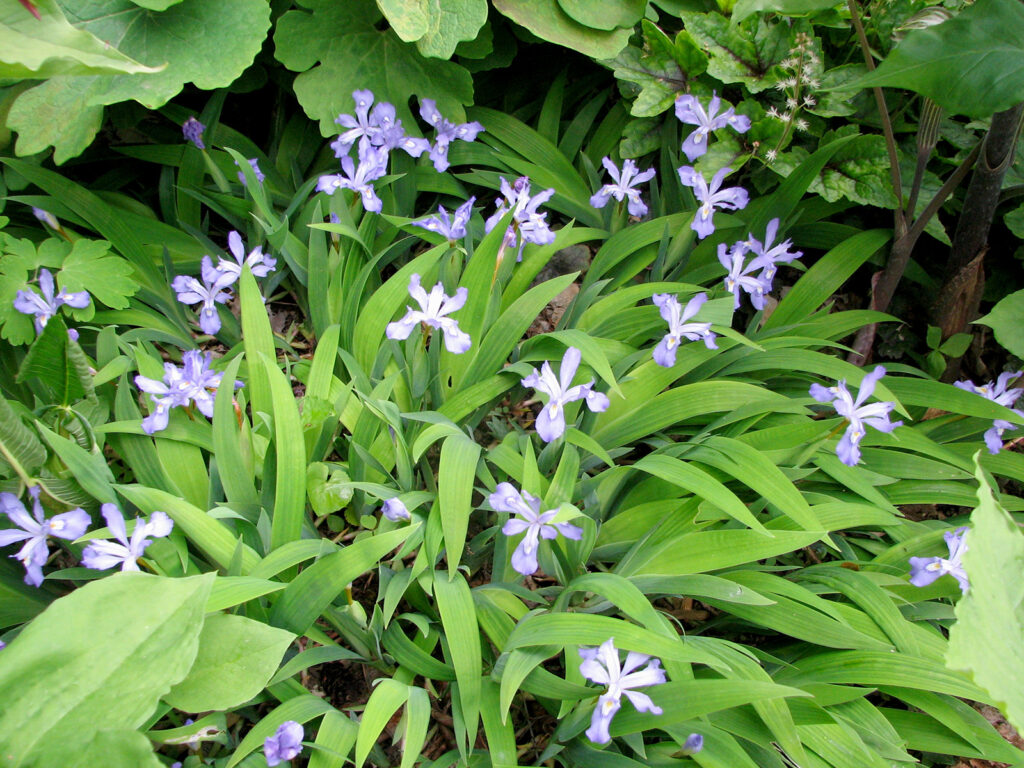
The first time we saw this plant, we were hiking in the Smokies. We rounded a corner and there they were, covering a small hill at the side of the trail. They wouldn’t look out of place in the most ornamental garden in the world. We have only a very small patch, and we enjoy both the flowers and the foliage.
Wildlife: Hummingbirds, bees
- Learn more:
- Wildflower Center: Crested iris
NOT QUITE NATIVE: Dwarf iris (Iris verna)
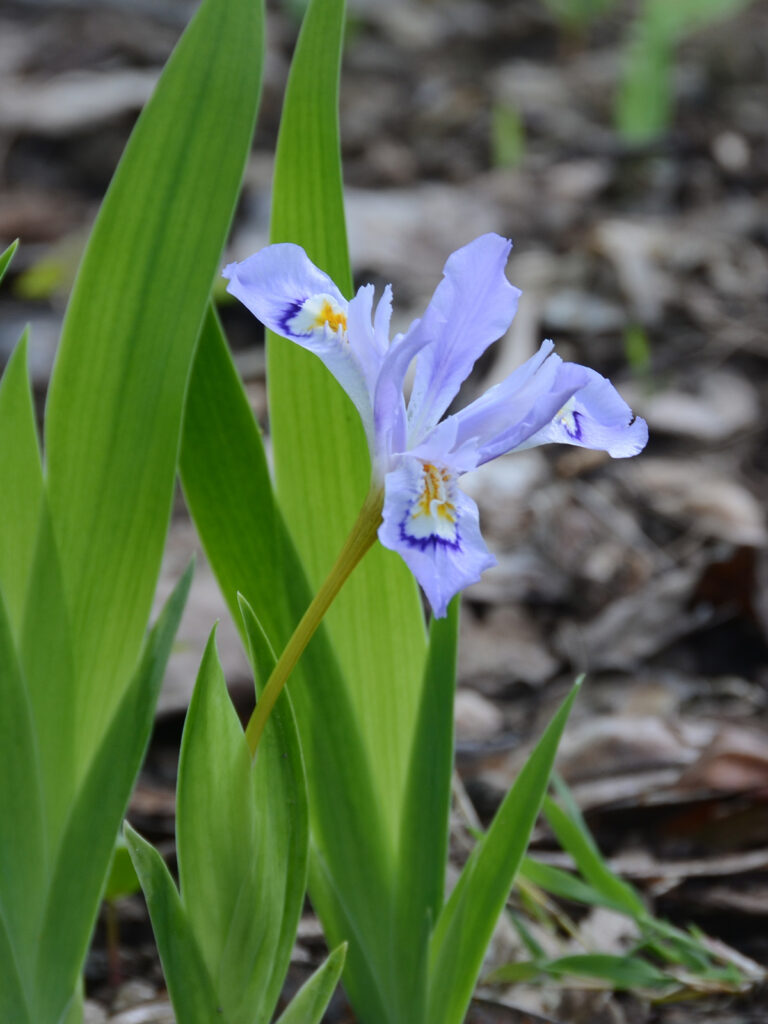
We got this at the Millersville PA Native Plant conference, and I’m not sure it has ever bloomed since it’s hidden away under more aggressive plants.
- Learn more:
- Wildflower Center: Dwarf iris
Blue flag iris (Iris versicolor)
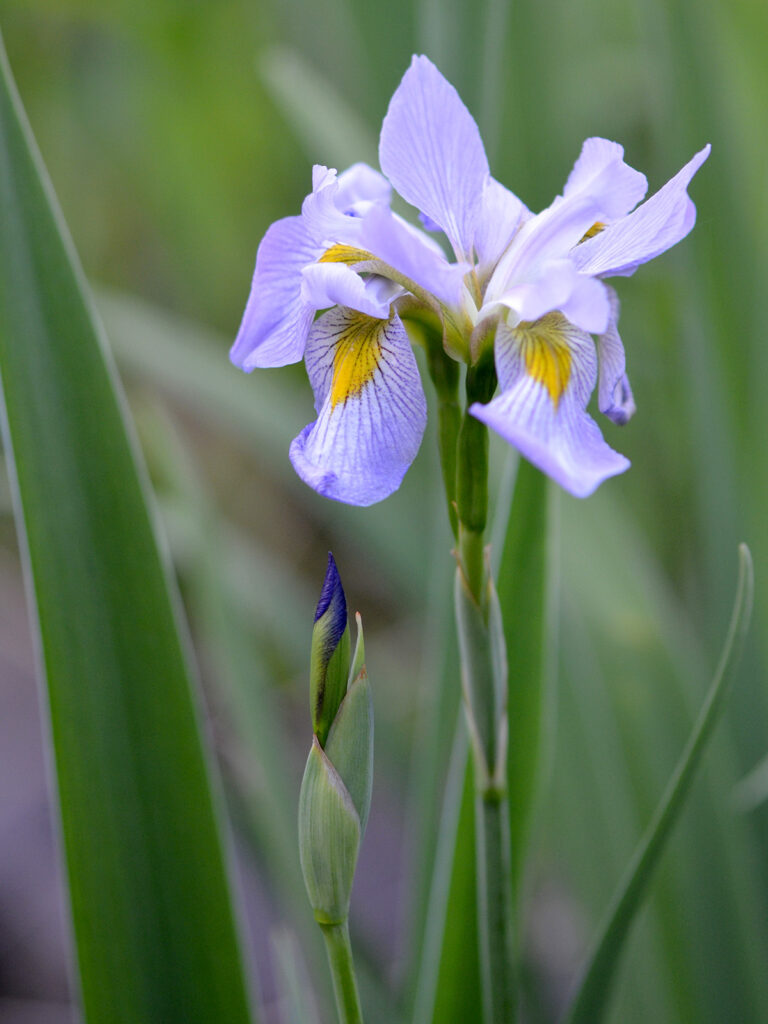
I first saw this plant many years ago in a marshy area at a local nature center, long before I became aware of native plants.
I wondered if someone had planted it there. How could such a beautiful plant just be growing out there in the wild?
Since then, of course, I’ve learned that there are many beautiful native plants
Blue flag iris was one of the first plants I planted at the edge of our pond. They multiply quite well, so I tried planting some of the extras in a regular garden bed. To my surprise, they seem to be thriving, so I guess it’s another case of a plant perhaps preferring a wet area, but still being able to grow in “regular” garden conditions.
Wildlife: Nectar for hummingbirds
- Learn more:
- Wildflower Center: Blue flag iris
Twinleaf (Jeffersonia diphylla)
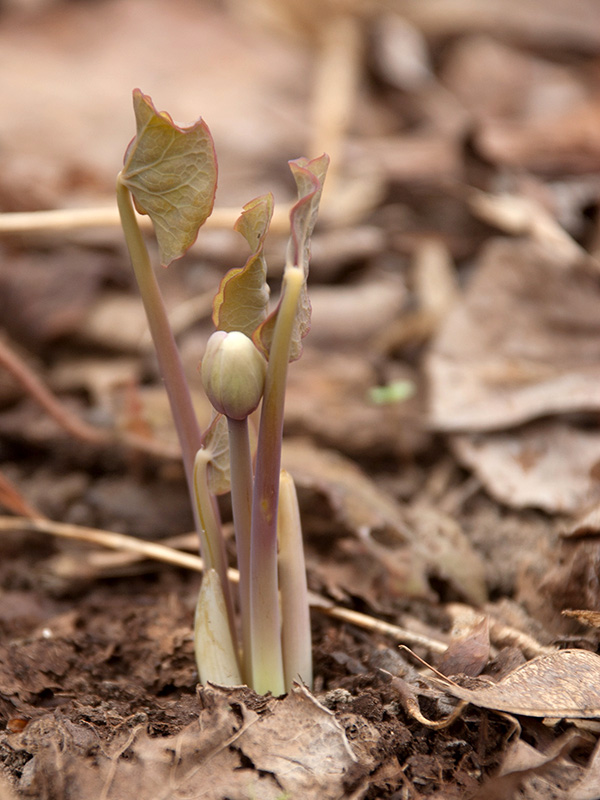
This is what it looks like when it first comes up in the spring.
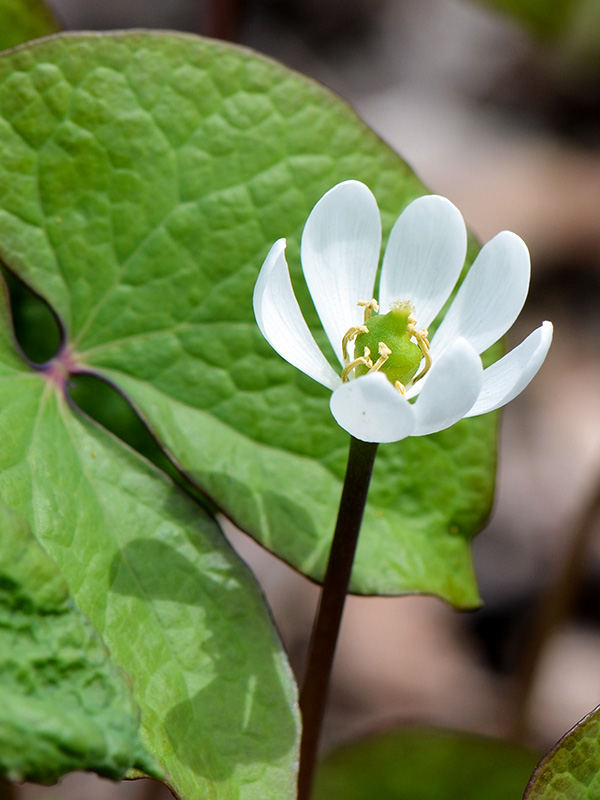
It’s called twinleaf because of its twin leaves, seen at the bottom of the photo. The flower doesn’t open up much more than this — then in a day or two, it’s gone, petals on the ground. It’s small, but charming. Then the fun begins: waiting for the garbage-can-like seedpod.
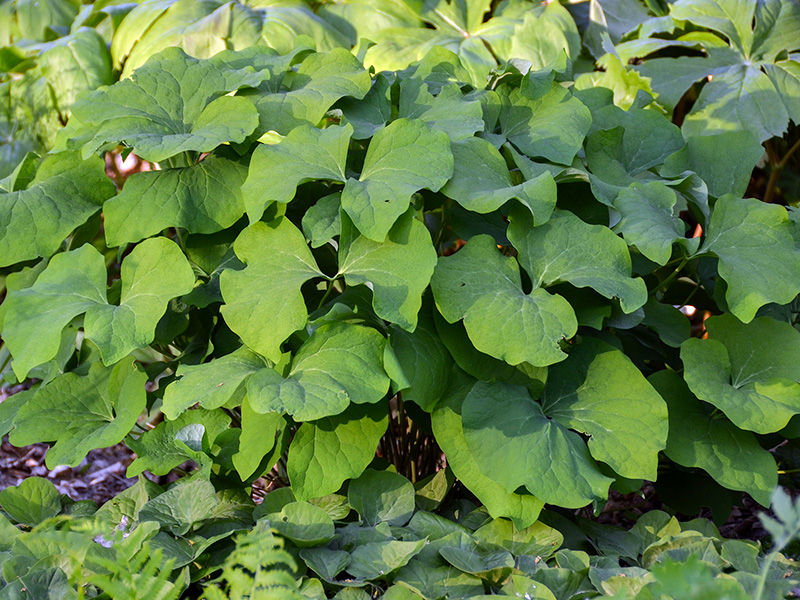
This is what the seedpod looks like before it matures. It always reminds me of a little alien face — or maybe even Kermit the frog!
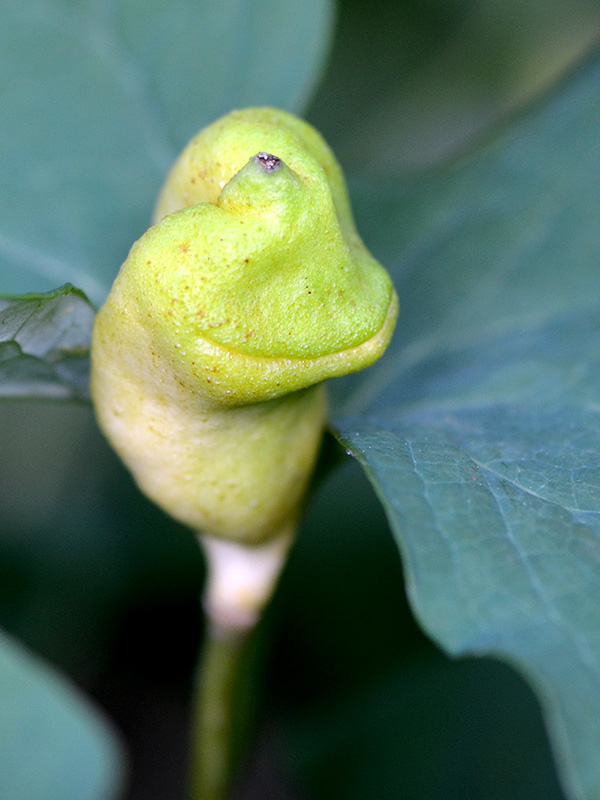
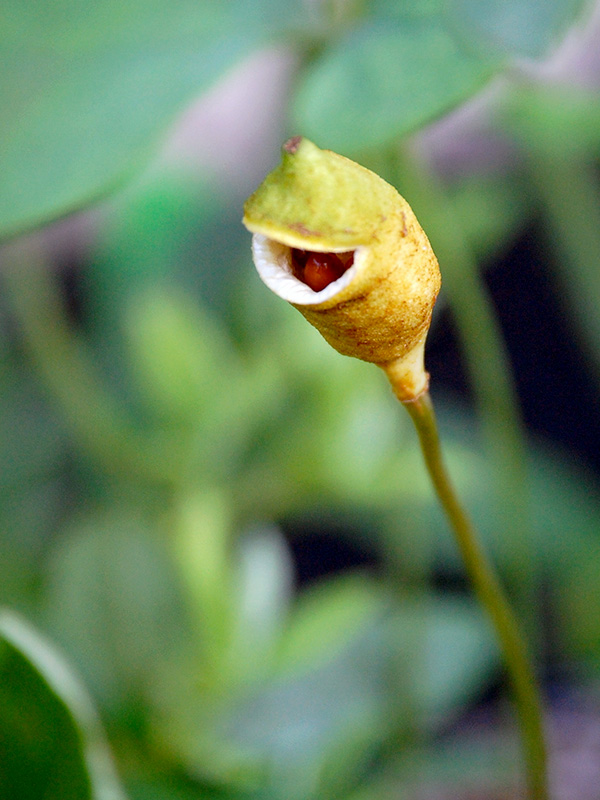
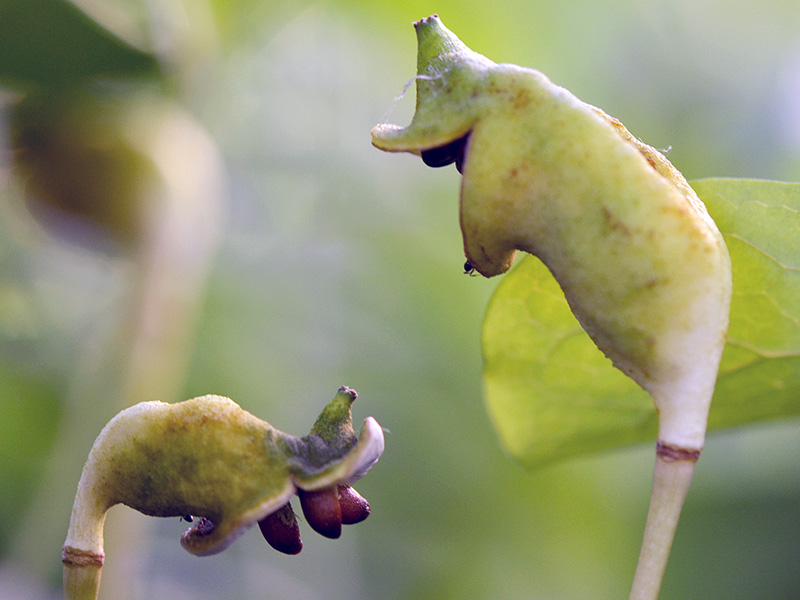
We bought it as a mature plant at the Millersville Native Plants in the Landscape conference, and it came complete with what I most wanted: its seed pod. We collected the seeds and they were surprisingly easy to grow. We just put them in a pot and left the pot sunk into the soil over the winter. We had more than a dozen little twinleaf plants growing in the spring! Not all native spring ephemerals are this easy.
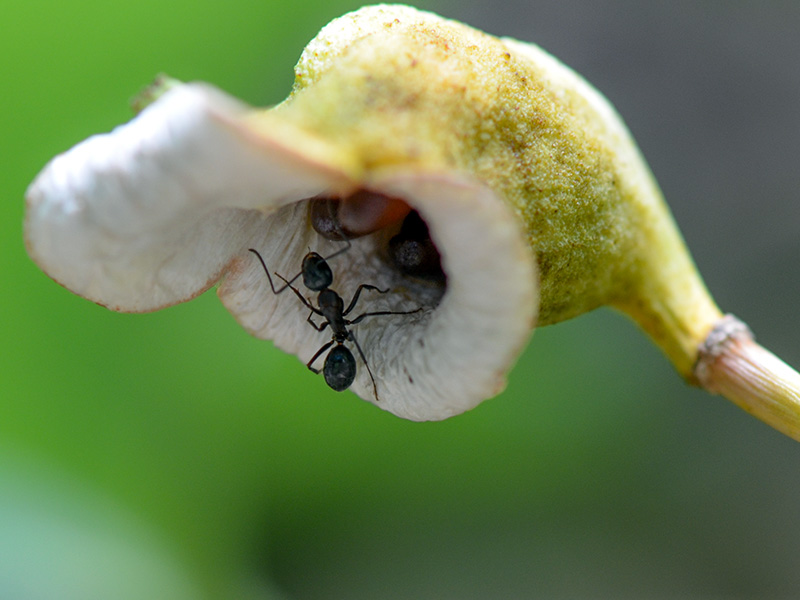
When people aren’t planting the seeds, though, ants help out.
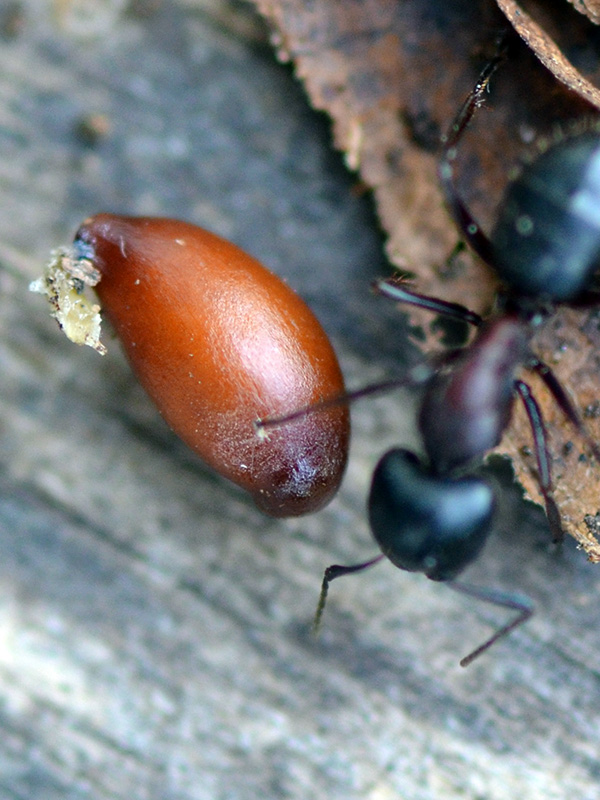
The seeds are one of those woodland plants with a large, lipid-rich structure called an elaiosome (shown at the top left of the seed).
Ants (and some other creatures) love these and cart away the seeds, dispersing them away from the parent plant to reduce competition.
More information on this method of dispersal is in this Botany Blog (although it’s specifically referring to trillium, one other of many plants whose dispersal is aided by ants).
NOT QUITE NATIVE: Liatris (Liatris spicata)
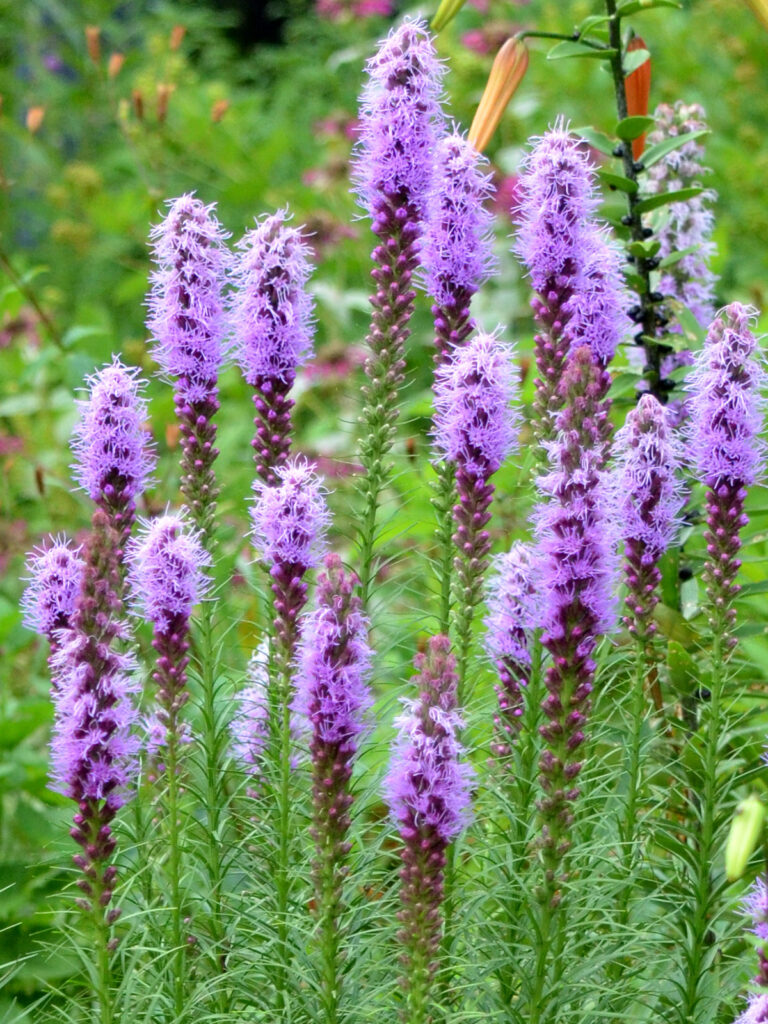
This is the type commonly sold in bags of 50 corms. It’s pretty easy to grow and very attractive. A great nectar plant.
One interesting feature is that, unlike most flowers, it blooms starting from the top and progresses downward.
Wildlife: Butterflies, hummingbirds
** SPECIAL VALUE TO NATIVE BEES **
** SPECIAL VALUE TO BUMBLE BEES **
- Learn more:
- Wildflower Center: Liatris
Turk’s cap lily (Lilium michiganense)
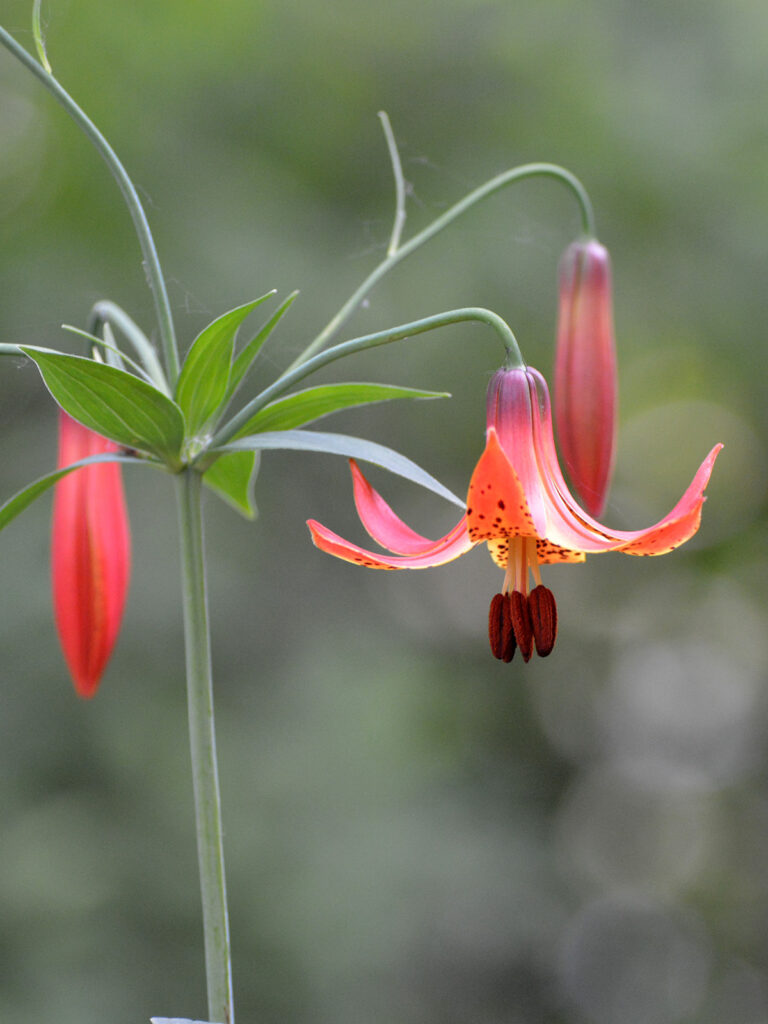
I’ve tried this a few times, but I’m not sure it has survived. I’d like to have a small patch of it.
I think one problem could be deer. I might try getting some more and planting them in the backyard out of the reach of deer.
Lilies are confusing and possibly mislabeled sometimes.
- Learn more:
- Wildflower Center: Turk’s cap lily
Cardinal flower lobelia (Lobelia cardinalis)
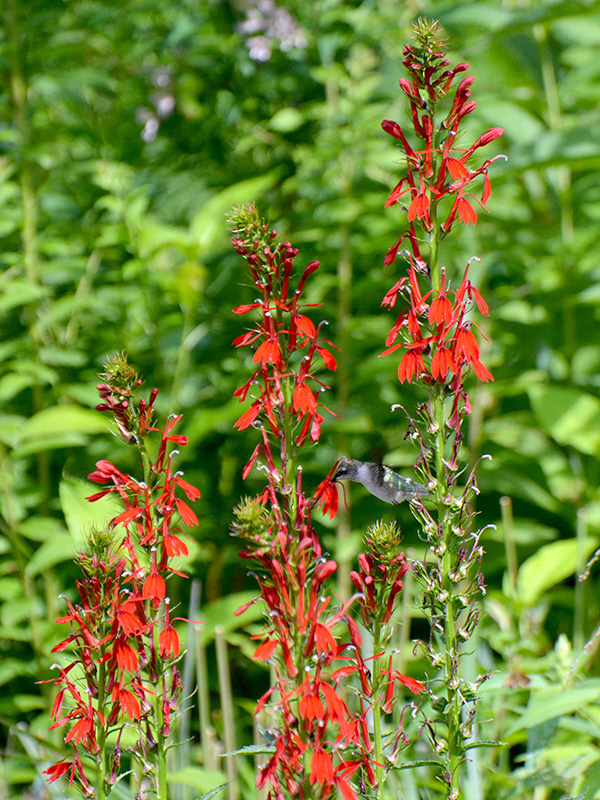
Cardinal-flowered lobelia is an almost-unreal brilliant red — as red as red could be. It’s easy to grow, but even though it’s a perennial, it’s not always easy to keep thriving for many years. After a few tries, I finally seem to have a few patches established, to the delight of the hummingbirds.
Wildlife: Nectar for hummingbirds, butterflies
Deer resistance: Moderate
- Learn more:
- Wildflower Center: Cardinal lobelia
- Humane Gardener: Flower power: Cultivars vs. straight species – Cultivars may not have as much nectar as the species
Blue lobelia (Lobelia siphilitica)
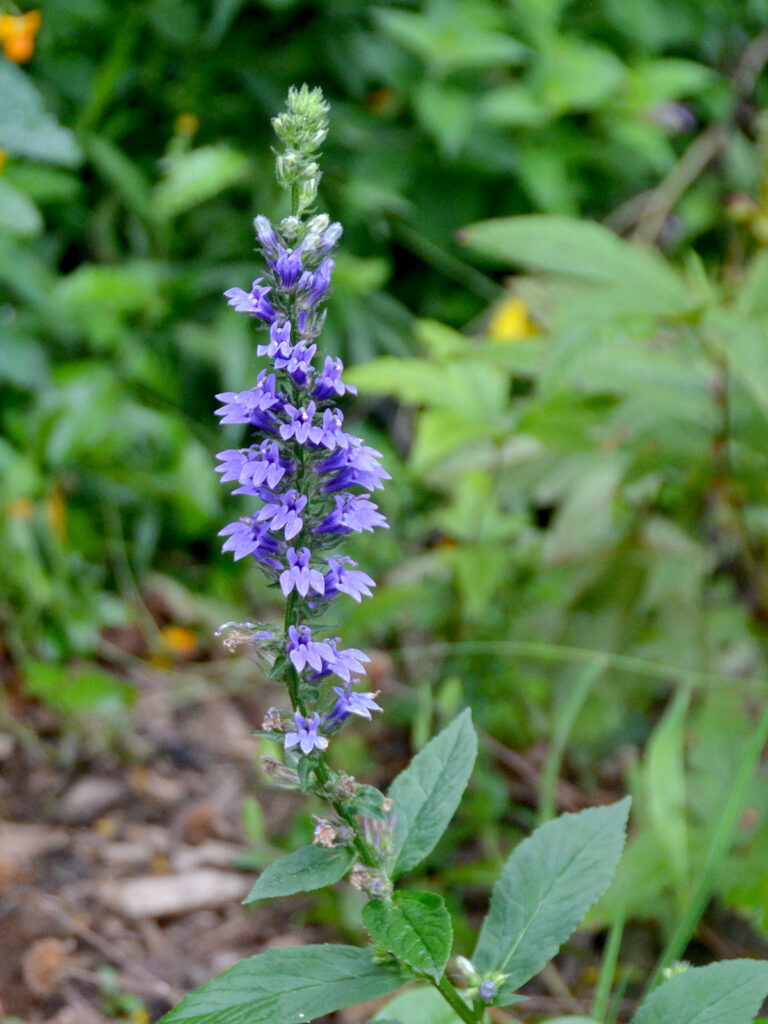
This cousin of the more-familiar cardinal flower is equally pretty, though not quite as vivid.
Wildlife: Birds, hummingbirds
** SPECIAL VALUE TO NATIVE BEES **
** SPECIAL VALUE TO BUMBLE BEES **
** Attracts predatory or parasitoid insects that prey upon pest insects **
- Learn more:
- Wildflower Center: Blue lobelia
